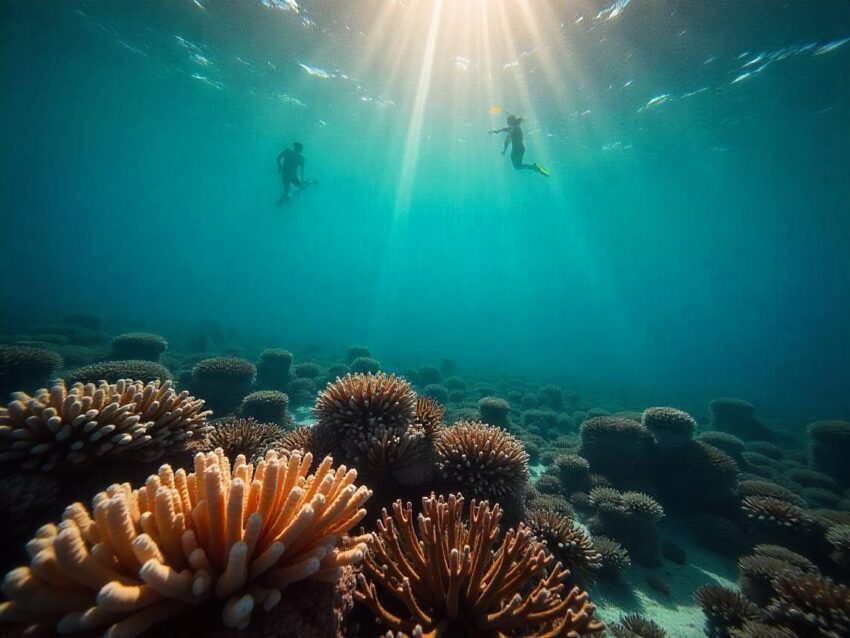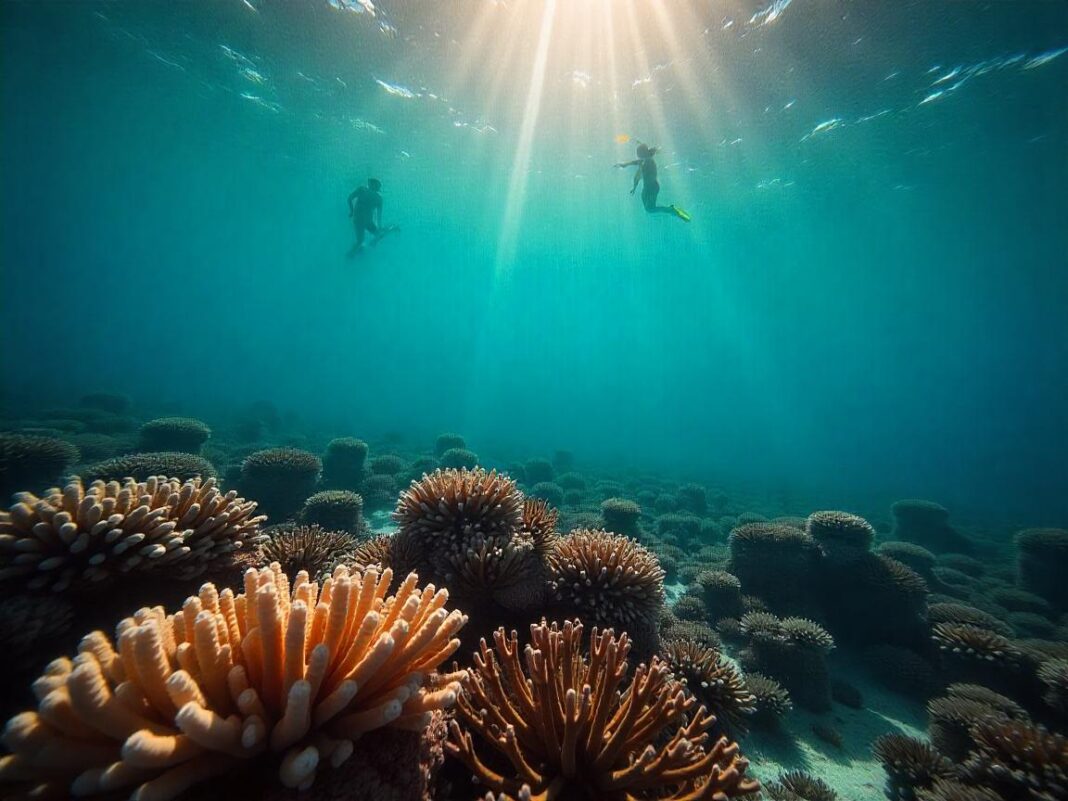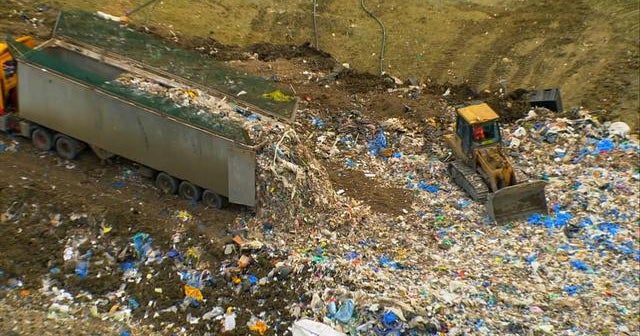Tuesday, June 17, 2025

Guadeloupe’s Pigeon Islands joins a growing list of endangered paradise spots—now standing shoulder to shoulder with Hanauma Bay, Maya, Costa Rica reefs, the Great Barrier Reef, the Maldives, and Villa Blanca. One thing ties them all together: corals face collapse amid overtourism. These once-vibrant underwater worlds are turning pale, brittle, and silent. The beauty that once drew millions is now the very thing at risk.
The latest update you need to know is more than just statistics—it’s an urgent signal. What’s happening right now beneath the surface is alarming and accelerating. Corals are bleaching. Reefs are dying. Ecosystems are crumbling.
But why now? And how did this crisis spread from Guadeloupe’s Pigeon Islands to the Maldives and beyond? As sea temperatures rise and foot traffic increases, the cost of global wanderlust is becoming painfully clear. Dive deeper, because this story doesn’t just concern marine life—it concerns us all.
Crisis Beneath the Waves: Guadeloupe’s Pigeon Islands Coral Reefs Face Collapse Amid Overtourism and Climate Pressure
In the crystalline waters off Guadeloupe’s Pigeon Islands, danger is hiding in plain sight. Every year, thousands of snorkellers descend upon this famed dive site, enchanted by its tropical beauty and marine biodiversity. But beneath the surface, the reef is fighting for its life.
This corner of the French Caribbean archipelago is facing an environmental emergency. The once-thriving coral ecosystem—long regarded as a marine treasure—is rapidly deteriorating. The cause? A deadly combination of overtourism and rising sea temperatures.
And the window to save it is closing fast.
From Paradise to Pressure Point
Tourism has long been the lifeblood of Guadeloupe’s coastal economy. The Pigeon Islands, part of the Cousteau Reserve, draw marine lovers from across the globe. Snorkellers and divers flock to the warm, shallow waters year-round, creating a booming industry of boat tours and dive shops.
But the coral doesn’t share in the celebration.
With every fin kick, every careless touch, and every dropped anchor, the reef suffers. Visitors ignore posted warnings and stand on fragile corals. They leave behind sunscreen, debris, and disruption. Even unintentional contact can crush decades of slow coral growth in seconds.
Now, reef patches that once glowed with color are bleaching—turning ghostly white. That’s a sign of stress so severe that survival becomes uncertain.
The Heat Is On: Climate Impact Escalates Damage
While tourism is a direct pressure, climate change is the silent killer. Ocean temperatures around Guadeloupe have risen steadily, especially in the last five years. Corals, which thrive in a narrow temperature range, are extremely sensitive to even small shifts.
Heat stress causes corals to expel their symbiotic algae—the source of their color and nutrition. Prolonged exposure leads to coral bleaching, then death.
This environmental double-punch—overtourism above and warming seas below—has left the Pigeon Islands reef teetering on the edge. Once resilient, the reef now shows the telltale signs of collapse.
Tourism at a Tipping Point
This unfolding crisis poses a fundamental question for the Caribbean tourism sector: how do you preserve a destination while promoting it?
Guadeloupe’s marine biodiversity is one of its key draws. But that very success may be sealing its fate. As travel demand returns to pre-pandemic levels, reef sites are experiencing visitor surges without adequate environmental safeguards in place.
The number of trained marine rangers remains limited. Enforcement is sporadic. Many tourists arrive uninformed or disregard posted guidelines. Tour operators are caught in a delicate balance between profit and preservation.
Meanwhile, coral health continues to deteriorate.
Local Action: A Race to Regulate and Restore
In the face of this growing threat, new efforts are surfacing. Diving clubs, conservation groups, and marine scientists are pushing for stricter regulations.
Some dive operators have begun self-regulating—limiting group sizes, introducing mandatory reef safety briefings, and investing in mooring buoys to prevent anchor damage. Educational signage is being updated and placed on tour boats. These grassroots actions are a sign of commitment—but they can’t succeed alone.
Local authorities are beginning to respond. Updated marine protection rules are in development, targeting the number of visitors allowed near the reef at any one time. More marine patrols are being proposed. But enforcement will require funding and community support.
Time is not on their side.
The Economic Cost of Coral Collapse
Beyond environmental damage, a collapsing reef brings real economic fallout. The tourism sector across the Caribbean generates billions in revenue and supports millions of jobs. In Guadeloupe, coral-related tourism is a vital piece of that puzzle.
If the reef ecosystem dies, the draw for snorkellers and divers disappears. That means fewer bookings, closed businesses, and lost income for local families. Protecting the reef is not just an ecological mission—it’s an economic necessity.
Moreover, healthy coral reefs provide natural barriers against tropical storms. As climate events intensify, losing this protection could increase disaster risks for Guadeloupe’s coastal communities.
The Global Lens: A Caribbean Wake-Up Call
Guadeloupe’s reef crisis is not an isolated event. From the Great Barrier Reef to Thailand’s Maya Bay, overtourism and warming seas are destroying coral ecosystems worldwide.
But the Pigeon Islands are different in one critical way: they’re still salvageable.
That makes them a bellwether—a symbol of what’s at stake, but also what can be saved. If communities, policymakers, and the tourism sector act together now, this reef may avoid the fate of so many others.
But inaction will write a different story.
The Path Forward: Preservation Through Education and Partnership
The road to reef recovery starts with awareness. Tourists must understand the impact of their actions. Dive operators must adopt reef-safe practices. Local authorities must invest in sustainable infrastructure.
And the global travel industry must stop selling paradise without paying the cost of protection.
What’s needed is a joint effort—one that puts preservation before profit. Because in the end, there is no tourism without a destination to enjoy.
The Final Warning Beneath the Surface
Under the turquoise waters of Guadeloupe’s Pigeon Islands, the coral reef sends a silent plea. The colors are fading. The fish are leaving. And the clock is ticking.
This is not just about Guadeloupe. It’s about the future of marine tourism and the fragile balance we must now learn to protect.
The reef can still be saved. But only if we act—today, not tomorrow.
Tags: Caribbean coral reef, climate impact on tourism, Coral Bleaching, Cousteau Reserve, Eco-tourism, French Caribbean travel, Guadeloupe, marine conservation, marine tourism, overtourism crisis, Pigeon Islands, reef protection policies, snorkeling Guadeloupe, sustainable diving



